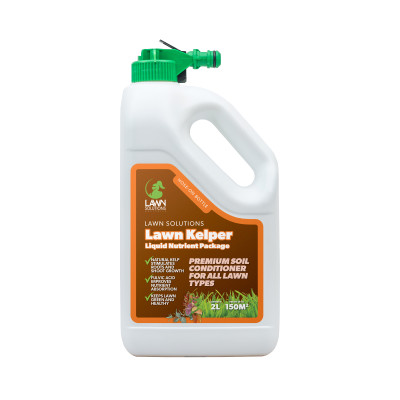Let’s get back to some grass fundamentals and look at how grass grows and why it is green.
First, we need to look at what grass actually is.
What is grass?
Grass is a common name for a large family of plants called Gramineae. Without going into too much of the biology of these plants, they have a simple structure with roots that grow into the soil, stems that grow from the base of the plant known as a crown and from these stems leaves extend that consist of a sheath and blade.
Some grasses creep along the ground with stems known as stolons and some also have stems called rhizomes that grow below the ground.
Click here to learn more about grass structure both above and below the surface.
How grass grows
Just like trees and other plants, grass converts energy from sunlight into sugar through the process of photosynthesis.
This energy is used to convert water and carbon dioxide into glucose. Carbon dioxide is absorbed through the stomata in the leaf and water is mainly derived from uptake in the roots.
Glucose is used through the plant for growth, while oxygen, a by-product of this process, is released into the atmosphere.
What about Chlorophyll?
Chlorophyll molecules are held within cells called chloroplasts. These cells will produce chlorophyll when light is present.
When grass absorbs light energy, the chlorophyll molecule goes into a high energy state, providing chemical energy for plant metabolism.
Without Chlorophyll, the grass would not be able to capture the light, so it would be unable to photosynthesise.
What makes grass green?
Grass appears green because Chlorophyll absorbs light at two wavelengths, both red and blue, while reflecting green. If grass is kept in complete darkness it will turn white and die.
Both magnesium and nitrogen form parts of the chlorophyll molecule, so if either of these are deficient, your grass can appear very pale green or even yellow.
What does lawn fertiliser do?
The key nutrients found in common fertilisers are referred to as NPK. Nitrogen, Phosphorus and Potassium.
If there is too little nitrogen, not enough chlorophyll will be produced. Too much though, and you end up with thin cell walls and poor root development.
A lack of Phosphorus reduces cell division leading to a build-up of chlorophyll, so it may appear dark green, but the grass will be weak with limited growth.
Potassium helps with the opening and closing of the stomata, so if deficient, the water content of the leaf can be reduced, which also restricts photosynthesis.
This is why regular fertilising with a balanced NPK fertiliser like Lawn Solutions Premium Fertiliser, is an important part of lawn care.
How can I keep my grass green?
Along with regular lawn care, including slow release granular fertilisers, you can also look at applying iron or pigment-based products like ColourGuard Plus to improve your lawns colour. It is important however, to make sure that any underlying health issues with the lawn are addressed so as to not mask the problem. This can include problems relating to nutrient deficiencies, soil compaction, disease, or environmental factors.
If you are unsure what is wrong with your lawn, contact your local Lawn Solutions Australia turf supplier for advice.


